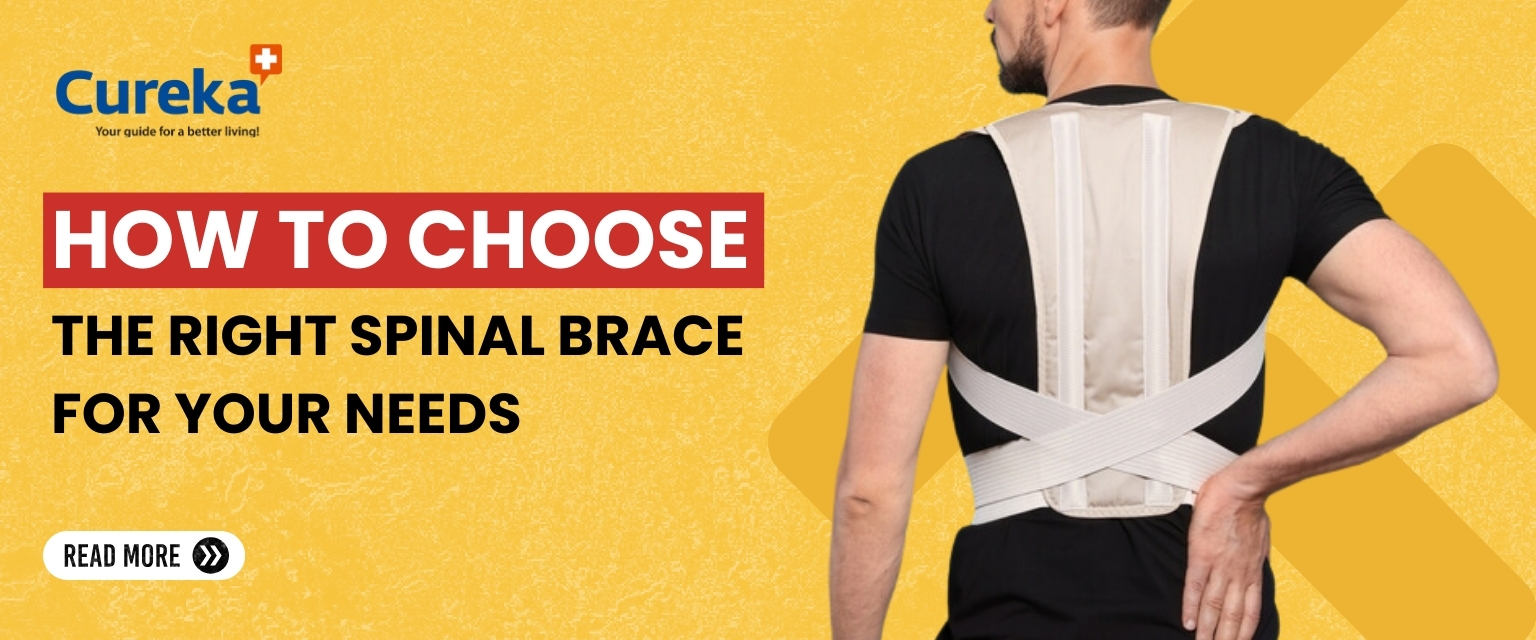How to Choose the Right Spinal Braces for Your Needs
Lower back pain is a common ailment affecting millions of people worldwide, significantly impacting their quality of life. Whether it’s due to an injury, a chronic condition, or the result of daily stress and poor posture, finding relief is often a priority for those suffering. One effective solution that has gained popularity over the years is the use of spinal braces. When it comes to spinal health, choosing the right brace is crucial, especially for those dealing with spinal fractures, chronic pain, or posture issues.
Spinal Fractures
Spinal fractures are a serious medical condition that can result from trauma, osteoporosis, or certain medical conditions. They involve the breaking of one or more vertebrae, which can lead to severe pain, limited mobility, and in some cases, permanent damage to the spinal cord.
Types of Spinal Fractures
- Compression Fracture:
This is the most common type of spinal fracture, often seen in individuals with osteoporosis. It occurs when the vertebrae collapse due to pressure, leading to a shorter, wedge-shaped vertebra.
- Burst Fracture:
More severe than a compression fracture, a burst fracture involves the vertebra breaking in multiple directions, which can result in fragments of bone pressing into the spinal cord.
- Fracture-Dislocation:
This occurs when there is both a fracture and dislocation of the vertebra, leading to instability of the spine and a high risk of spinal cord injury.
Symptoms and Impact
Symptoms of spinal fractures vary depending on the severity and location but typically include sharp back pain, decreased mobility, and sometimes numbness or weakness if the spinal cord is affected. Immediate medical attention is crucial to prevent long-term complications.
Why Spinal Braces Are Necessary?
Spinal braces play a vital role in the treatment and recovery process of spinal fractures and other spinal conditions. Here’s why they are necessary:
- Stabilization and Support
A spinal brace provides crucial stabilization to the injured area, preventing further damage by limiting movement. This is especially important in cases of compression fractures, where any additional pressure could exacerbate the injury.
- Pain Relief
By immobilizing the spine and reducing the load on the vertebrae, spinal braces can significantly alleviate pain. This allows patients to engage in daily activities with less discomfort, aiding in a quicker recovery.
- Posture Correction
For those suffering from poor posture due to spinal conditions or lifestyle habits, a spine posture corrector can help realign the spine, reducing the risk of future injuries and improving overall spinal health.
- Facilitating Healing
In cases of severe fractures, such as burst fractures or fracture-dislocations, spinal braces can create the necessary environment for the bones to heal correctly. They ensure that the vertebrae remain in a proper position, reducing the risk of long-term complications.
How to Choose the Right Spinal Brace?
- Determine the Purpose of the Brace
The first step in choosing a spinal brace is to determine its purpose. Are you recovering from a compression fracture, dealing with chronic back pain, or aiming to correct your posture? The intended use will guide you towards the right type of brace.
Spinal Brace for Compression Fracture: For those recovering from a compression fracture, a rigid brace that limits movement and provides full support to the spine is necessary. These braces often extend from the lower back to the upper back, ensuring stability.
Spine Belt: A spine belt offers moderate support for individuals with mild to moderate lower back pain. These are typically used by those who stand or sit for long periods and need additional support to prevent pain and discomfort.
Spine Posture Corrector: If poor posture is your main concern, a spine posture corrector will gently pull your shoulders back and align your spine, helping to correct bad habits and reduce the strain on your back.
- Consider the Level of Support
Spinal braces come in varying levels of support, from soft and flexible to rigid. The level of support you need depends on the severity of your condition:
Rigid Braces: Ideal for severe injuries like burst fractures or post-surgical recovery, where any movement could be detrimental to healing.
Semi-Rigid Braces: These offer a balance between support and flexibility, suitable for conditions like compression fractures where some movement is allowed but still controlled.
Flexible Braces: Best for posture correction or mild back pain, these braces allow more movement and are often used as preventative measures.
- Material and Comfort
The material of the brace is also a key consideration. Look for braces made from breathable, skin-friendly materials to avoid irritation, especially if you’ll be wearing the brace for extended periods. Comfort is crucial, as wearing an uncomfortable brace may discourage regular use, which can hinder recovery.
- Adjustability and Fit
An adjustable brace allows for a customized fit, which is essential for effective support. Ensure that the brace can be adjusted to fit your body shape and size properly. A good fit ensures that the brace remains effective throughout the day and does not cause additional discomfort.
- Ease of Use
Consider how easy the brace is to put on and take off. Some braces may require assistance, while others are designed for easy, independent use. If you live alone or plan to wear the brace frequently, ease of use should be a significant factor in your decision.
Consulting a Healthcare Professional
While this guide provides a thorough overview, it’s always best to consult with an orthopedic surgeon before making a final decision. They can assess your condition and recommend the most suitable brace based on your specific needs and medical history.
Conclusion
Choosing the right spinal brace is a critical step in managing and recovering from spinal conditions. Whether you’re dealing with a compression fracture, seeking relief from chronic back pain, or correcting poor posture, understanding your needs and considering factors like support level, material, and fit will help you find the perfect brace. Remember, the right spinal brace not only supports your recovery but also enhances your overall quality of life.











